Recently updated on June 12th, 2024 at 03:24 pm
Spain’s famous pilgrimage trail, El Camino de Santiago, has become one of the world’s most popular walking holidays and spiritual journeys. Pilgrims travel from all over Europe, taking unique routes that all end at the cathedral in Santiago de Compostela, Galicia’s capital city. Originally, it was to go see the legendary remains of the Apostle Saint James, but today people walk the Camino for all sorts of reasons. In fact, over 300,000 people lace up their boots every year to take on the pilgrimage! If you’re dreaming of trying the walk yourself, here is everything you need to know from which routes to take to how to get your Compostela certificate. Buen Camino!
Unlock the Camino de Santiago for less with Last Minute Deals on trips departing in the next 4 months
What is the Camino de Santiago?
The Camino de Santiago, or the Way of St. James, is an ancient pilgrimage trail originating in medieval times. Made up of a vast network of roads and paths, pilgrims travel to arrive at the cathedral of Santiago de Compostela.
Legend has it that the remains of the Apostle Saint James the Great were buried here. He is the patron saint of Spain and the city is named after Saint James – Santiago de Compostela means St James of the Field of Stars.
The pilgrimage began in the 9th century and since then, it has grown massively in popularity. Around 350,000 Compostela pilgrim certificates were issued in 2019 alone (compared to just over seven in 1976). Today, people from over 190 different countries make the journey along this UNESCO-listed trail every year!
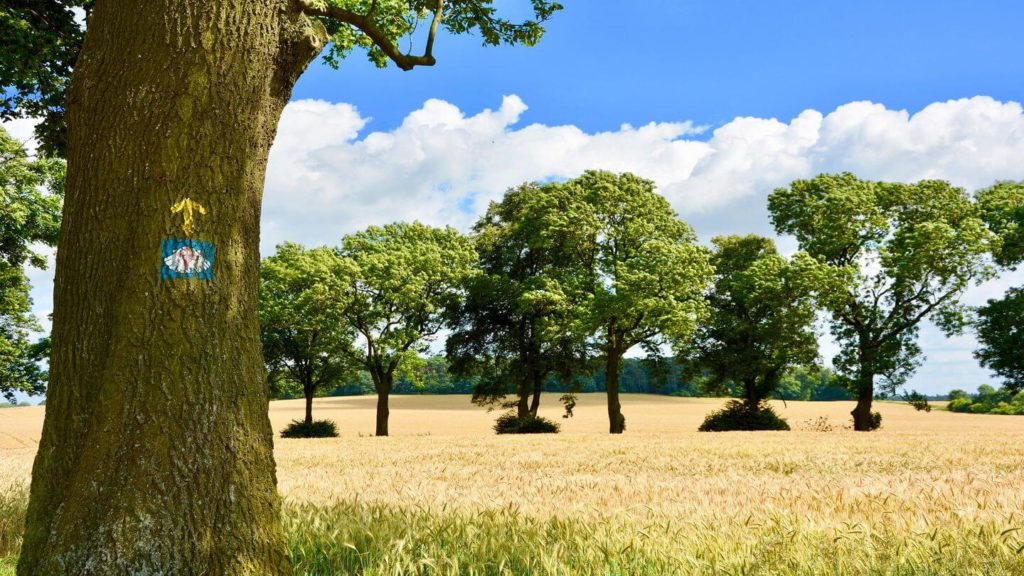

Pilgrims, known locally known as ‘peregrinos’, take up the journey on foot, bicycle or even horseback. Some walk alone, others with a partner, or in groups. However one decides to take on the Camino, there’s always a great sense of community. You always see pilgrims passing each other with a welcome of ‘Buen Camino!’ to wish each other well on their journey.
The Camino has encouraged invaluable cultural exchanges for centuries, and today, the Camino is more than a pilgrimage. It’s a trip of a lifetime that attracts thousands of people all over the world.
Discover the Camino on Northern Spain
Why walk the Camino de Santiago?
View this post on Instagram
Although it has traditionally been a religious pilgrimage, people of all ages and backgrounds now walk the Camino for many different reasons. Some take on the Camino to experience the culture and history of the trails, while others take it on as a fitness challenge. Others walk the Camino for the camaraderie and community.
It’s often a journey of great self-development and a kind of meditation for many. The journey allows them to unplug from their daily life and spend time clearing their heads. It’s also a great chance to reconnect with nature as you become immersed in the stunning landscapes of rural Spain Galicia and Castilla y León.
Whether your motivation for taking on the Camino is religious or not, the journey is always spiritual. It’s all about pushing your limits, enjoying simple pleasures and making friends. It’s a true journey of self-discovery.
Walk the Camino this summer with a Last Minute Deal
How does the Camino work?
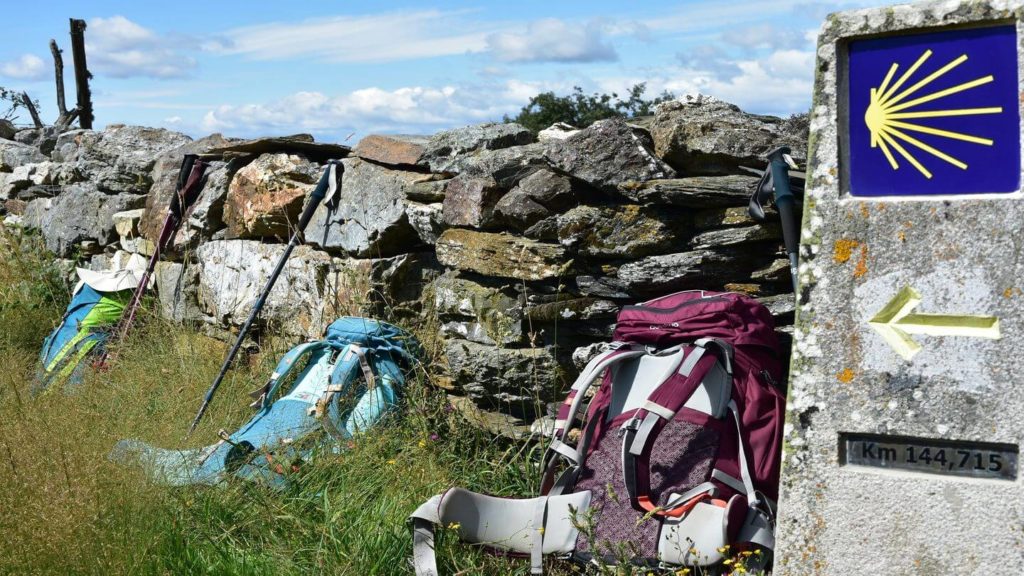

There are dozens of routes you could take, all weaving together like streams and meanders that find their way to one final lake. There’s an easy way to tell if you’re on a pilgrimage route: they’re all waymarked with the iconic scallop shell symbol.
The Camino is not just one path. It’s a whole network of routes. When the pilgrimage began in the Middle Ages, the aim was to arrive to the sacred city of Santiago de Compostela. There was no official starting point, but because it was safer for people to walk together, pilgrims created common roads and paths. Since pilgrims came from all over Europe, including France, Portugal, England and beyond, routes were established so people could travel from their home countries. Travelers choose their route based on many factors including weather, landscapes, popularity and amenities. Some routes are up to 1,000km long, while others are half that length.
For more useful info check out our Spain Destination Guide
You may also like: 12 useful Spanish phrases to learn before your trip
The Compostela
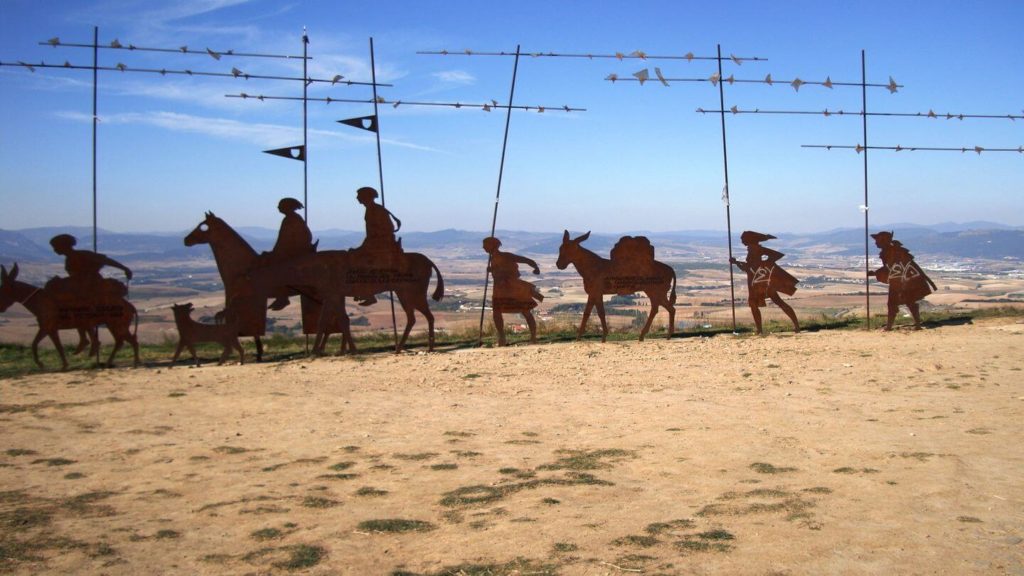

When choosing a route, try to aim to walk at least 100km (or 200km if you’re traveling by bicycle). Doing so will earn you the Compostela, a Latin certificate declaring the completion of your pilgrimage.
Because of this, the last 100km of the French Way and the English Way are extremely popular. The last 100km takes around six days to walk for most people, while the whole French Way takes around 35 days to walk. Cycling is usually two or three times faster than walking, while some people wander the Camino for months at a time!
To receive your Compostela, you’ll need a ‘Pilgrim Passport’, also known as a ‘Credencial’, to collect stamps along the way to prove your journey. This certifies you as an official pilgrim, and harkens back to the Middle Ages, when pilgrims needed a document to allow access to places like the Royal Hospital of Santiago. Now, it is symbolic of your journey, where you get stamps from the ‘albergue’ (hostels) you’ll stay at, as well as churches, town halls, and many other places you’ll find on your way along the Camino.
We think you’ll also like: 12 of the most useful Spanish phrases to learn before your trip to Spain
The Camino de Santiago routes
These are the most popular routes that all lead to Santiago de Compostela.
Camino Francés (the French Way)
The French Way is by far the most popular route and for good reason. It’s a spectacular walk with varied scenery, plus loads of nice hotels and restaurants along the way. It’s also popular as it’s the route which Martin Sheen’s character Tom travels in the movie ‘The Way’.
The French Way is just over 790 km and officially starts in St Jean Pied-du-Port (where most routes from other parts of Europe converge). Although it begins in France, the route is mostly walked in Spain.
You’ll cross through some of the most stunning parts of the country, including rural mountain regions and beautiful cities like Leon, Burgos and Pamplona. It also passes through many important pilgrimage towns like Ponferrada, Logroño and Sarria.
We think you’ll also like: 12 Photos that Will Make You Want to Visit Spain This Year
Camino de Finisterre (the Finisterre Way)
View this post on Instagram
While Santiago de Compostela is the focal point of the Camino, many pilgrims continue on to Finisterre, one of the westernmost points in Europe on the Atlantic coast. The name Finisterre literally translates to “end of the world”, and this is the only Camino route that begins in Santiago de Compostela.
It travels nearly 100 km and you’ll still get your Compostela completion certificate for doing this route. You’ll pass through hillsides, pine groves and medieval villages, including Galician towns like Cee and Negreira.
When reaching the “end of the world” in Finisterre, it was customary for pilgrims to collect a shell as proof they had reached their destination. This is why the scallop shell is now the symbol of the Camino.
Camino del Norte (the Northern Way)
View this post on Instagram
This route starts in Irún on the border with France and travels along the gorgeous northern coast of Spain through the Basque region and Asturias. Traversing 820km, the Northern Way passes through wonderful cities like San Sebastian, Bilbao, Oviedo and Santander.
You’ll cross through rolling green hills, inland meadows, quaint villages, beautiful beaches and old monasteries. There is also plenty of fantastic northern Spanish cuisine and Michelin-starred restaurants along this route, so it’s definitely one for the foodies.
Camino Portugués (the Portuguese Way)
Starting in Lisbon and passing through Porto and Pontevedra as it takes you north through Portugal, this has become the second most popular Camino route. It’s around 610km long and mostly flat without too many hills.
It takes you along stunning coastlines with sandy beaches, passes close to the Catholic pilgrimage site of Fatima, and crosses into Spain and the lovely old town of Tui. If you want to take on a less crowded route that still has lots of amenities, the Portuguese Way is a great option.
Camino Portugues Coastal (the Portuguese Coastal Way)
This route is a variant of the original Portuguese Way and has grown in popularity as it takes you close to the spectacular Atlantic Ocean. You’ll get to walk along the coastline for several days and you can wander along the boardwalks by the seaside and explore the estuaries of this remote region.
You’ll also pass through charming old towns like Baiona, the port town of Vigo, and Pontevedra, the ancient capital of Galicia. The last leg then takes you inland through woodlands and small villages to Santiago de Compostela. This route is also even flatter than the original Portuguese Way, so if you enjoy walking with sea views and through the forest, this is the path to take.
Camino Inglés (the English Way)
View this post on Instagram
This path is around 110km, while the route from the La Coruña is only 75km. The Ferrol route follows the shoreline through Galicia, serving up stunning beaches and sea views, before heading inland into rolling farmland with old chapels and leafy paths. The route is well marked and many of the milestones have interactive QR codes with information on towns along the way.
Camino Primitivo (the Original Route)
The Original Way is thought to be the first pilgrimage route to Santiago de Compostela. And while it’s quite a challenging walk, it is one of the most beautiful and rewarding. The route starts in Oviedo and travels southwest to Santiago de Compostela for around 328km. You’ll see fewer people and fewer amenities and there are plenty of steep hills, however you’ll get to see the beautiful valleys, mountains and viewpoints from Asturias to Galicia.
The route passes through farmlands, coastline, woodlands and small villages. It also stops in Lugo which is still surrounded by ancient Roman walls and towers. The last section meets the French Way in Melide and follows that route for 50km until Santiago de Compostela.
Via de la Plata
If you’re interested in Roman history, this is the path for you. Spanning 1,000km, this is the longest Camino route through Spain, and most of the route follows the old Roman road north starting from Seville. You’ll pass through great cities like Merida, Salamanca, Cáceres, Ourense and Zamora, and since it’s less crowded than other routes, it’s also quite peaceful.
The terrain is mostly flat and you’ll pass through beautiful regions with lush forests, lakes and plenty of Roman ruins. You’ll then ascend through oak woodlands and farmland, before passing by hot springs in Ourense where you can soothe your weary legs. Although the terrain is easier than the French Way, the Via de la Plata route has stages of longer walking days with less frequent amenities.
Via Podiensis
View this post on Instagram
Also known as Le Puy Camino, the Via Podiensis route starts in the south of France. It’s one of the most beautiful Camino routes, travelling through the Auvergne region of France with stunning churches and historic monuments. You’ll pass through several UNESCO sites including the cathedral at Le Puy-en-Velay and the bridge at Conques, along with peaceful countryside dotted with woodlands, dairy cattle and quaint villages.
You’ll also pass through the Armagnac vineyards and the pine trees of the Gascony region as you move toward the Pyrenees mountain range. There are plenty of steep ascents and hilly sections, but it is truly beautiful. The route arrives in Saint Jean Pied-de-Port, where the French Way begins and takes you on to Santiago de Compostela.
We think you’ll also like: A Pilgrim’s Progress: The religious sites of Northern Spain
What happens when you arrive in Santiago de Compostela?
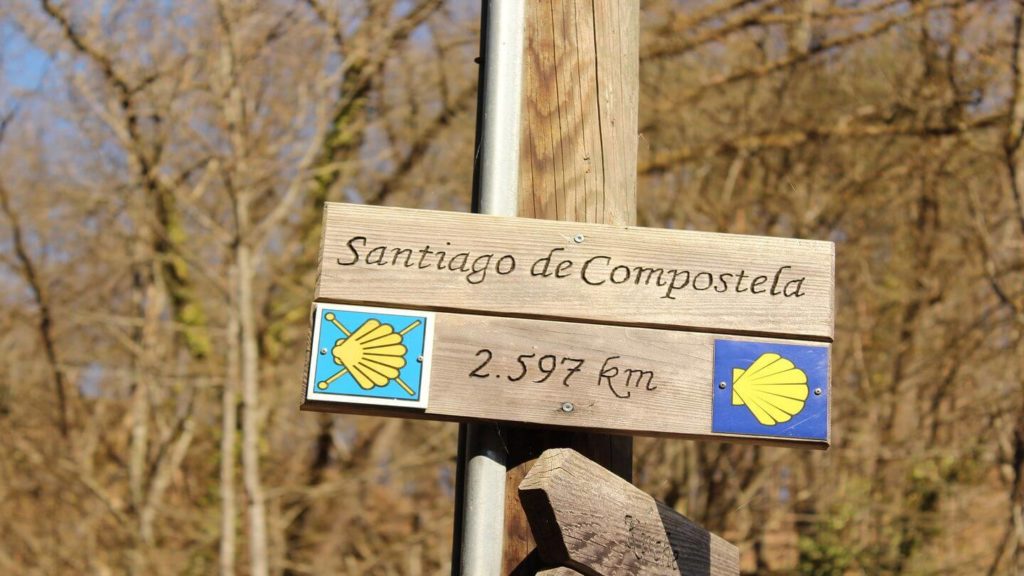

Many pilgrims head straight to the Pilgrim’s Office to receive their final stamp. Those who travelled 100 km or more (or 200 km or more for those travelling by bicycle), will receive their Compostela certificate.
Many pilgrims then attend the Pilgrim’s Mass at the Cathedral. These run at 12pm and 7:30pm, and you should arrive at least half an hour early to get a seat. For the finale, they hoist the Botafumeiro (a huge thurible weighing 50 kilograms) high into the air. It swings across the mass, releasing incense over the crowd.
How fit do you need to be to walk the Camino?
The Camino is not to be underestimated. Although you don’t need a high degree of physical fitness, you will be walking a minimum of 100 km (if you want to ‘officially complete’ the Camino). You’ll also carry a large backpack, so you do need to be prepared. Make sure you get in some training in the weeks and months before you leave and be ready to walk some long stretches and strenuous climbs.
It’s a great idea to bring walking sticks as these take 20 percent of your weight off your knees. When you’re climbing, that can be the difference between having a wonderful time and wanting to throw your backpack off the next bridge! Remember, you can go as fast or slow as you like, and you can add in rest days whenever you need it. Walk the Camino your way.
Best time to walk the Camino
View this post on Instagram
While July and August are the most popular months, they’re also the hottest with sweltering summer temperatures. If you prefer fewer crowds and milder weather, the best time to walk the Camino is May to June and September. You can make the journey any time of year, however autumn can be very wet and cold, while winter brings snow and ice.
Walk the Camino in July, August or September and save with a Last Minute Deal
Where to stay along the Camino
There are many accommodation options along all the Camino routes. Albergues and refugios are hostel-like accommodations run exclusively for pilgrims. They range from privados (a privately-run albergue and the most luxurious and expensive option) to municipal (a local council-run albergue that are often the cheapest and most basic option).
There’s also parroquias, a church-run albergue with some offering mass or a blessing. Most albergues operate on a ‘first come, first served’ basis. Preference is given first to walkers, then horse-riders, then cyclists.
Where to eat along the Camino
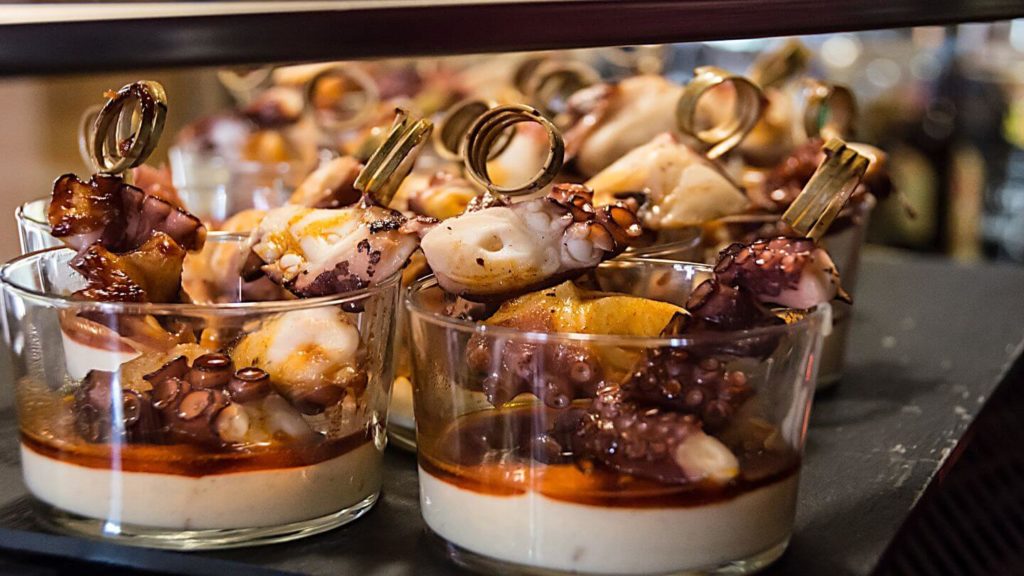

You can all find lots of wonderful local delicacies on the Camino, ranging from creamy croquettes to Galician-style octopus. Galicia is particularly known for its mouthwatering pintxos and it’s all best washed down with local wine. You can also look out for the menus del días (menus of the day). These are cheaper and offer delicious set starters, mains and desserts.
Want the perfect tour to unlock Europe’s holiest pilgrimage sites, like Fátima and Santiago de Compostela? Take our Days of Devotion tour for 12 days of sacred traveling, all with a fun group of like-minded peregrinos.
Have you ever walked the Camino de Santiago? Are you dreaming of taking on this famous pilgrimage trail? Let us know in the comments below!